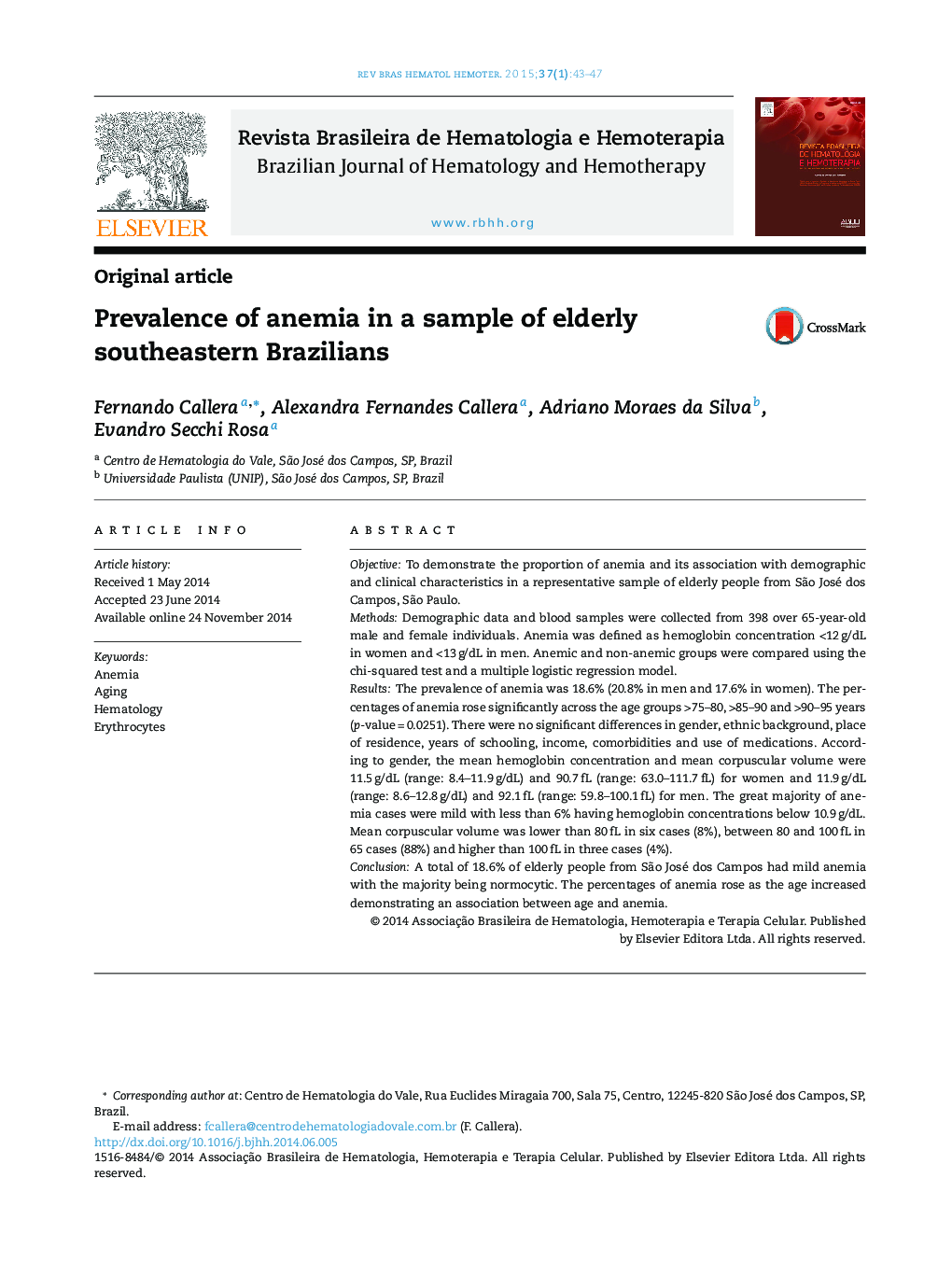| Article ID | Journal | Published Year | Pages | File Type |
|---|---|---|---|---|
| 3333050 | Revista Brasileira de Hematologia e Hemoterapia | 2015 | 5 Pages |
ObjectiveTo demonstrate the proportion of anemia and its association with demographic and clinical characteristics in a representative sample of elderly people from São José dos Campos, São Paulo.MethodsDemographic data and blood samples were collected from 398 over 65-year-old male and female individuals. Anemia was defined as hemoglobin concentration <12 g/dL in women and <13 g/dL in men. Anemic and non-anemic groups were compared using the chi-squared test and a multiple logistic regression model.ResultsThe prevalence of anemia was 18.6% (20.8% in men and 17.6% in women). The percentages of anemia rose significantly across the age groups >75–80, >85–90 and >90–95 years (p-value = 0.0251). There were no significant differences in gender, ethnic background, place of residence, years of schooling, income, comorbidities and use of medications. According to gender, the mean hemoglobin concentration and mean corpuscular volume were 11.5 g/dL (range: 8.4–11.9 g/dL) and 90.7 fL (range: 63.0–111.7 fL) for women and 11.9 g/dL (range: 8.6–12.8 g/dL) and 92.1 fL (range: 59.8–100.1 fL) for men. The great majority of anemia cases were mild with less than 6% having hemoglobin concentrations below 10.9 g/dL. Mean corpuscular volume was lower than 80 fL in six cases (8%), between 80 and 100 fL in 65 cases (88%) and higher than 100 fL in three cases (4%).ConclusionA total of 18.6% of elderly people from São José dos Campos had mild anemia with the majority being normocytic. The percentages of anemia rose as the age increased demonstrating an association between age and anemia.
